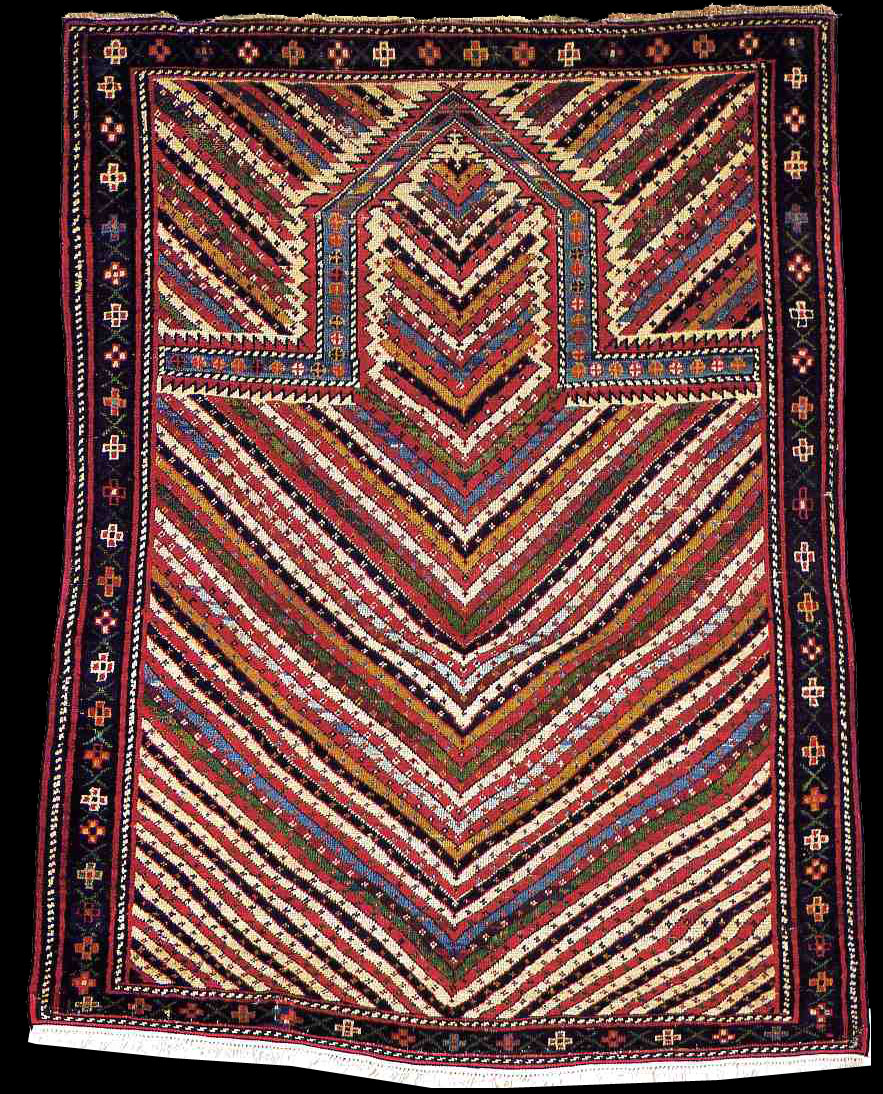SIZE: 55 1/2 x 44 in. (141 x 111.8 cm.)
WARP: wool, z3s; light brown
WEFT: cotton, 235 x 2 with areas of up to 6 discontinuous wefts, esp. at the
edges; ivory
PILE: wool, Z2S, symmetrical knots, h. 9, v. 10, 90 k/sq. in.; ivory, tan,
dark brown, red-brown, red, gold,dark green, green (abrash), dark blue,
blue,light blue
ENDS:top: ivory cotton weft-faced plain weave
SIDES: cut, modern cord attached
While the colors of its stripes might first appear to be arbitrarily chosen,
a closer look reveals the careful planning that determined their sequence.
At the bottom, the field begins with a "base" of alternating red, white, and
blue stripes that cradle the rest of the design. Above, color groupings form
four dark chevrons, with decreasing spaces between them. At the prayer arch,
the stripes terminate with a sawtooth effect in red and white, which creates
the illusion of a third dimension. Finally, the restrained narrow border
design effectively but unobtrusively frames the dazzling interior.
Lit.: NERS |

